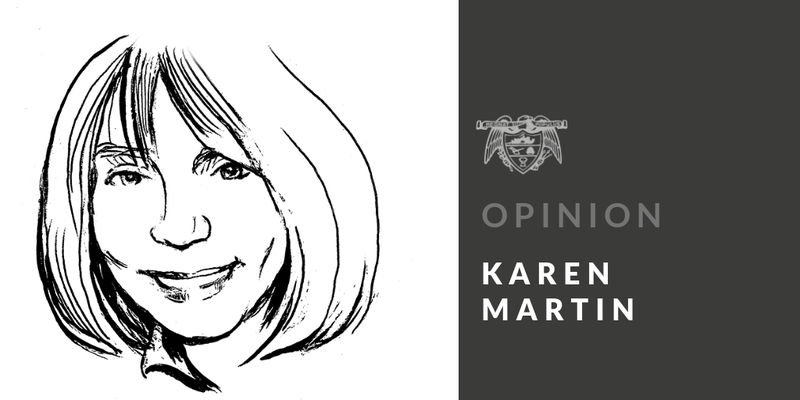Anyone who's wandered in dazed confusion around the massive property that is the University of Arkansas for Medical Sciences in search of the proper parking lot, the correct building, and a specific physician and treatment facility might be surprised to learn that it wasn't always so mighty.
It got off to a shaky start in 1879, the first medical school in the state. Before it came along, aspiring doctors had to go "back east," or to St. Louis or Tulane in New Orleans for training.
This information, and lots more, was shared by Tim Nutt during the recent Quapaw Quarter Association's Preservation Conversation: The History of UAMS.
Nutt is director of the Historical Research Center at the UAMS Library, where he oversees 6,200 books on medical history, a collection that has been building since around 1970, as well as the medical center's institutional papers going back to the 1870s.
It's a period the Jonesboro native finds intriguing; if he could live any time in the past, he told the Democrat-Gazette's Ron Wolfe in a cover story for High Profile in 2016, his choice would be the 1880s in Arkansas, "especially if I could have been among the German immigrants, so I could experience what immigrants from Europe were seeing for the first time."
With Nutt, it's personal: his great-great-grandparents left home in central Europe's Liechtenstein to settle what is now Bigelow in Perry County.
He noted in the High Profile story that he wanted to be remembered as "a saver of Arkansas history."
He told KUAR-FM that he aims to raise the profile of the center by becoming more active in historical societies, identifying possible new acquisitions, and digitizing the current library.
Nutt's goal is to collect medical histories from all 75 counties in Arkansas--anything related to medical care--along with becoming more active in historical societies, identify new acquisitions, and digitize the current library.
"It's nice to have the materials we have, but it's a shame we don't have the materials we don't have," he says.
To that end, he got input from his audience; he's 49, and there were plenty of people in attendance at Preservation Conversations who've had first-hand experiences with the medical center as it grew and moved to various locations in Little Rock. (And with Peck's, the Markham Street beer joint that was apparently frequented by med school habitues and predated his--and my--time.)
A certified archivist, Nutt came to UAMS in August 2015 from a position as head of special collections at the University of Arkansas Libraries in Fayetteville. Before that he was acting curator of the Butler Center for Arkansas Studies in Little Rock; and before that he was managing editor of the online Encyclopedia of Arkansas History and Culture.
He always wanted to be an archivist, he says, despite his parents' desire for him to become an accountant. "My first interest in history came from the sesquicentennial of Arkansas [the state's 150th anniversary] in 1986," he told Ron Wolfe. "I realized this was something I could study."
According to the UAMS website, the medical school was started by eight physicians, led by Dr. P.O. Hooper of Little Rock, with an investment of $5,000.
The Spirendo Restaurant and Hotel on Second Street between Main and Louisiana streets--merely 10 years old when it went bust in 1879--became home to what was then known as the Medical Department of Arkansas Industrial University.
By 1890, Nutt says, the school had a graduating class of 190.
As enrollment grew, the school was housed in various locations, including a new building at Second and Sherman streets (construction cost: $15,000) and the Old State House. A new medical school was built in 1935 at 12th and McAlmont, complete with a hospital and clinical education facilities, with funding provided by President Franklin Roosevelt's Public Works Administration.
A school of pharmacy was added in 1951 at 16th and Lewis streets, followed by a school of nursing in 1953, which graduated its first class in 1957.
The University of Arkansas Medical Center, designed by hot-stuff architect Edmund Durrell Stone, opened on a 26-acre site on West Markham Street in 1956. Student housing arrived in 1959. Air conditioning became available to patients in 1966.
A 540,000-square-foot hospital opened in 2009, as did Northwest Regional Campus in Fayetteville. UAMS is home to the Colleges of Medicine, Nursing, Pharmacy, Health Professions, Public Health and a graduate school with nearly 3,000 students and 800-plus resident physicians.
Then there are the research and treatment facilities: Winthrop P. Rockefeller Cancer Institute, Harvey and Bernice Jones Eye Institute, Psychiatric Research Institute, Jackson T. Stephens Spine and Neurosciences Institute, Donald W. Reynolds Institute on Aging, and Translational Research Institute.
Outreach programs, including eight regional centers and eight regional centers on aging, operate in every county in the state.
All that development over so many years has produced a sprawling 84-acre campus that can feel overwhelming to first-time visitors. Parking is limited to gated decks, often tricky to negotiate, especially for older folks, many who have driven long distances to get the care they need.
Don't lose your stamped parking ticket, or you'll have to pay to get out.
And if you find your way to the Historical Research Center (it's on the fifth floor of Building 2), feel free to stop in. Everyone is welcome, Nutt tells KUAR. "We're always open for people to come up for tours," he says, which he'll be pleased to lead.
Karen Martin is senior editor of Perspective.
kmartin@arkansasonline.com
Editorial on 10/13/2019
